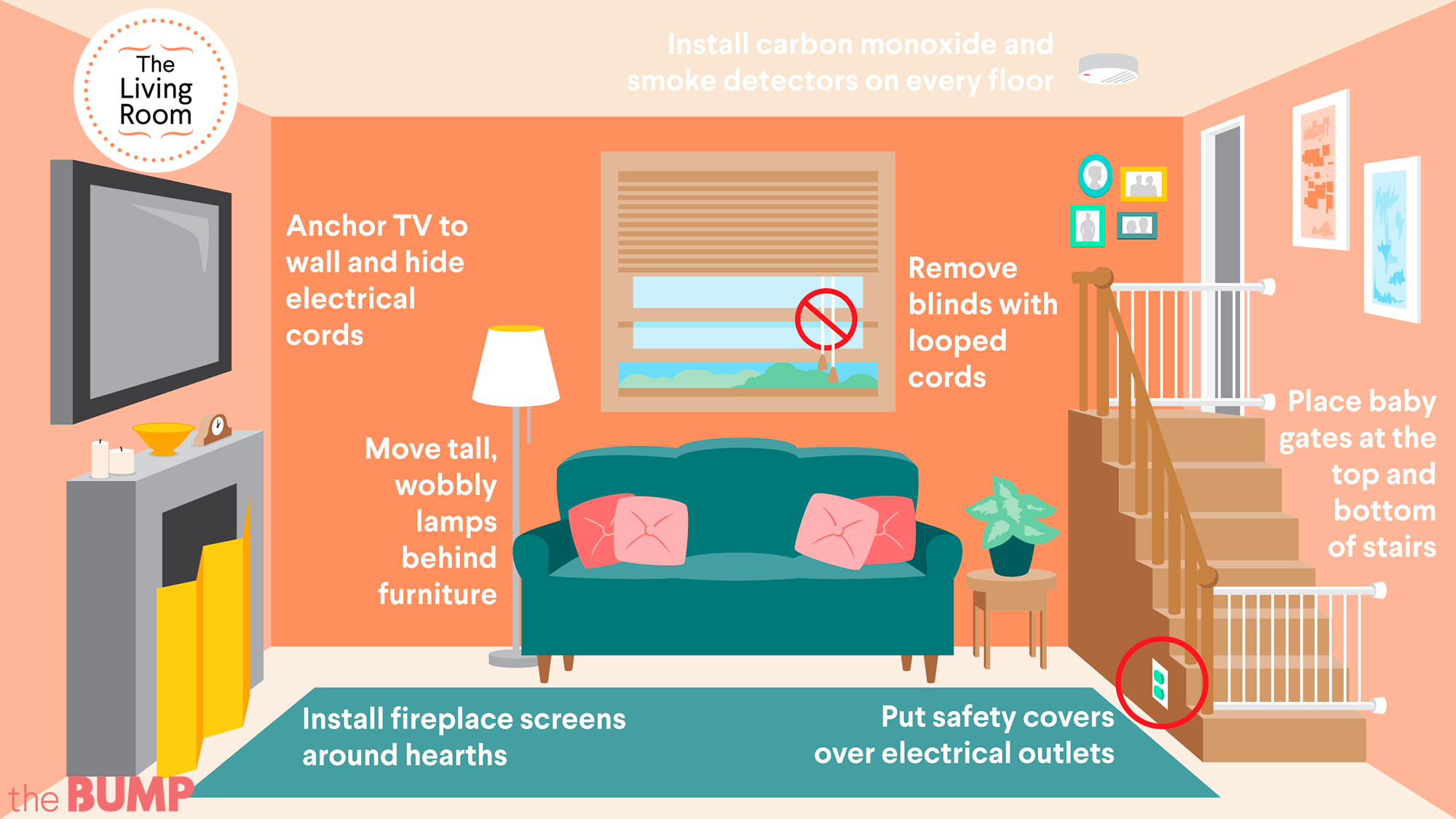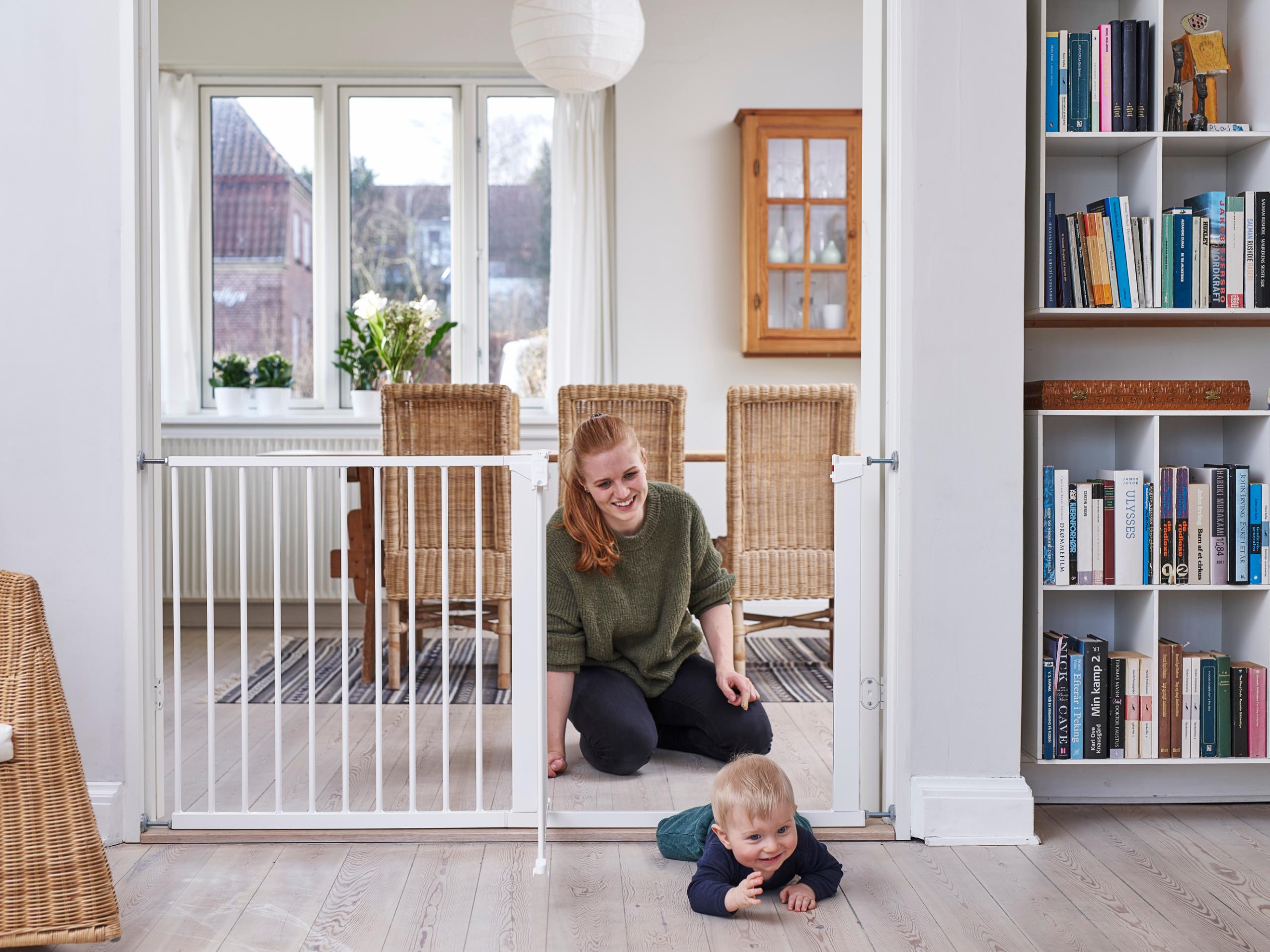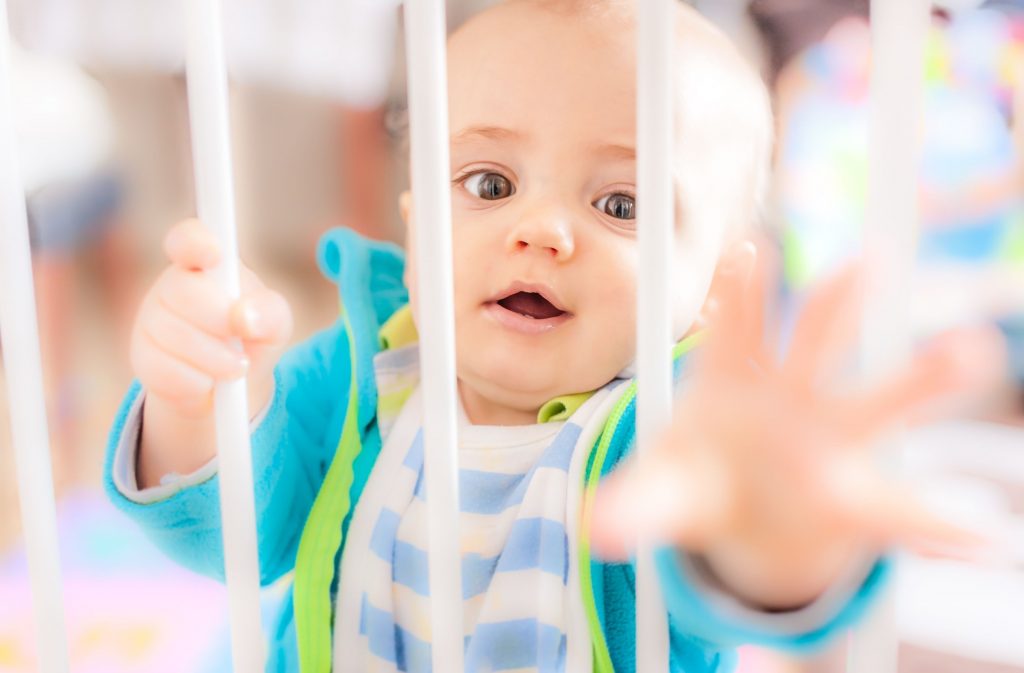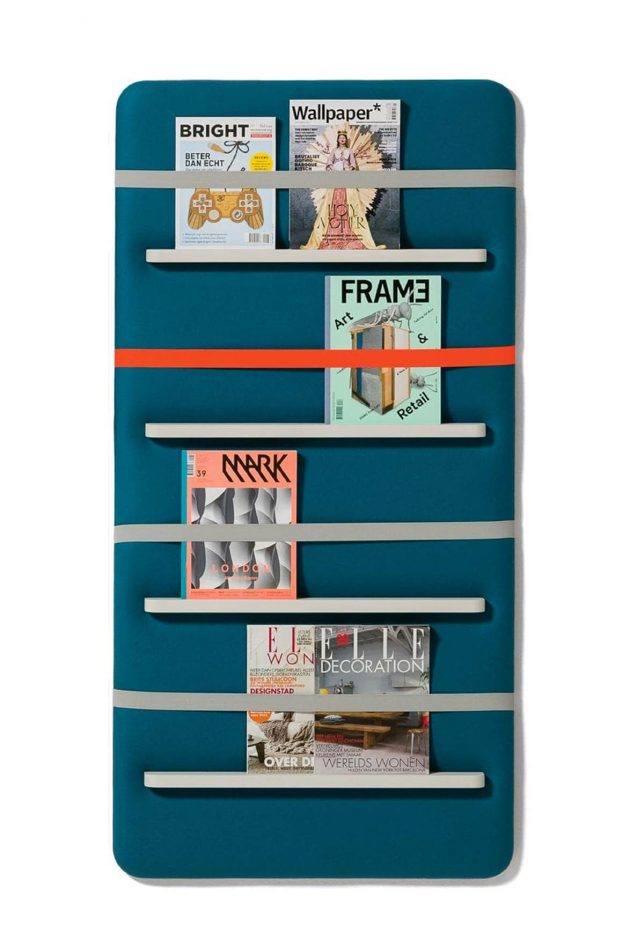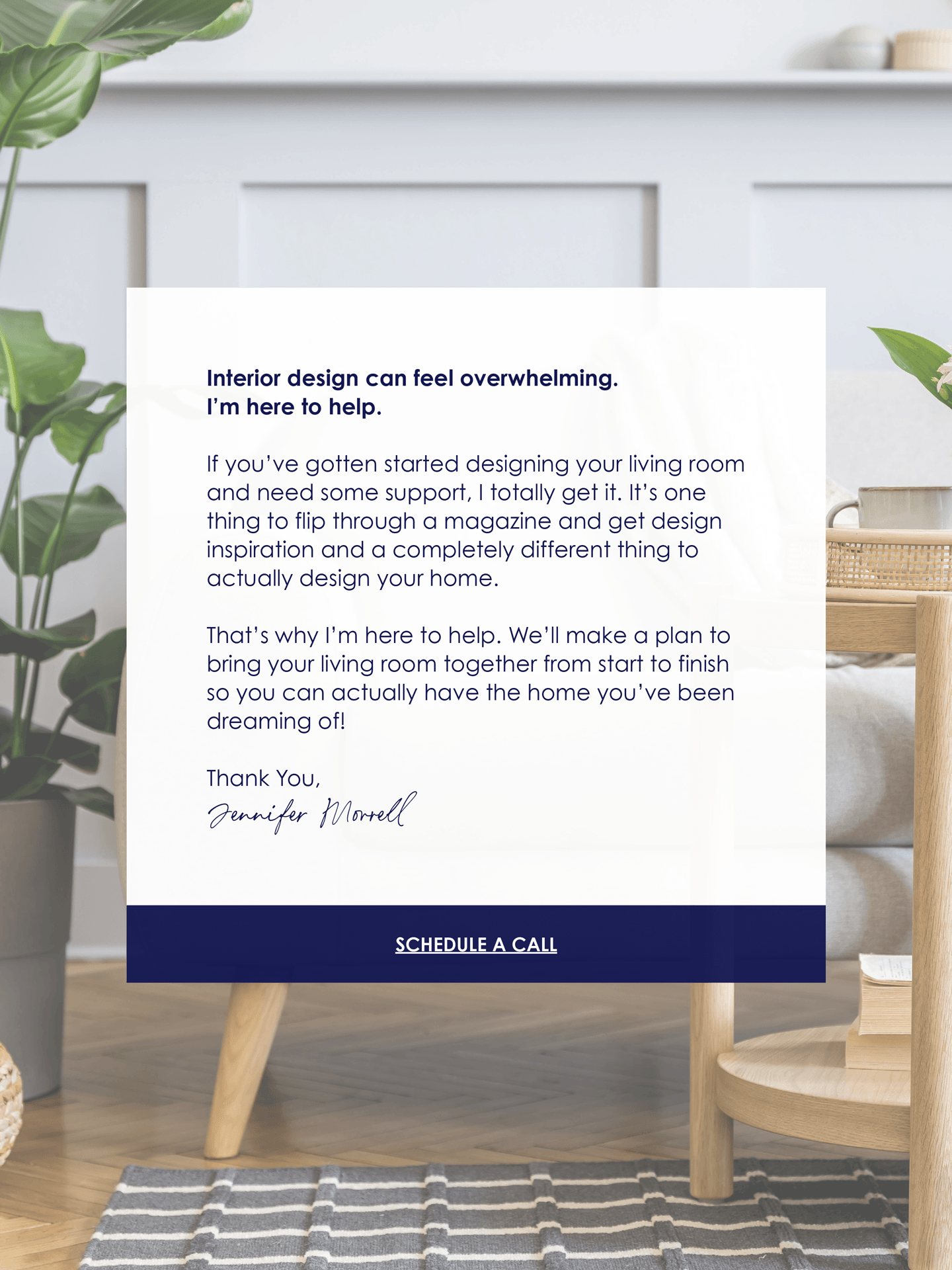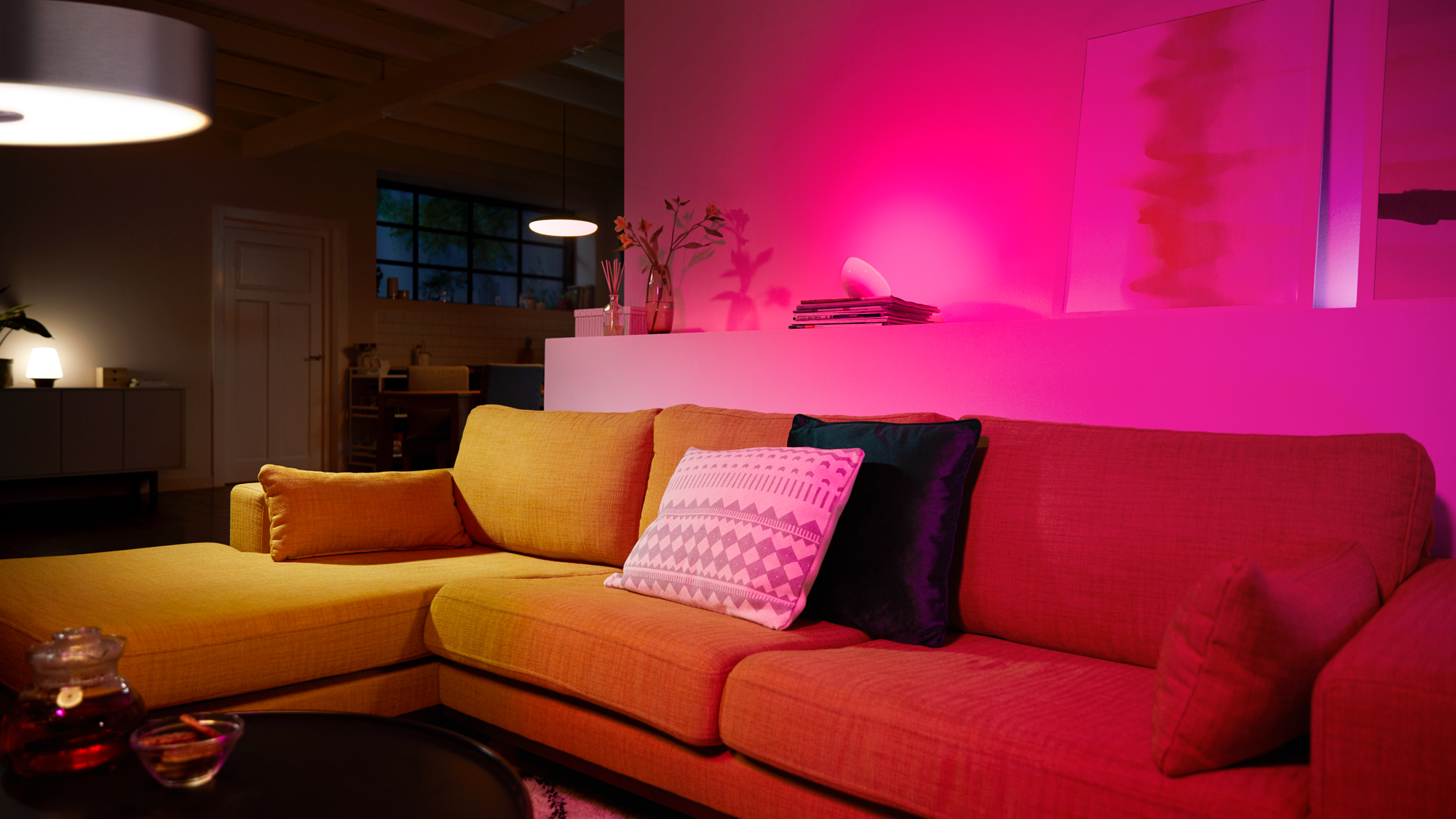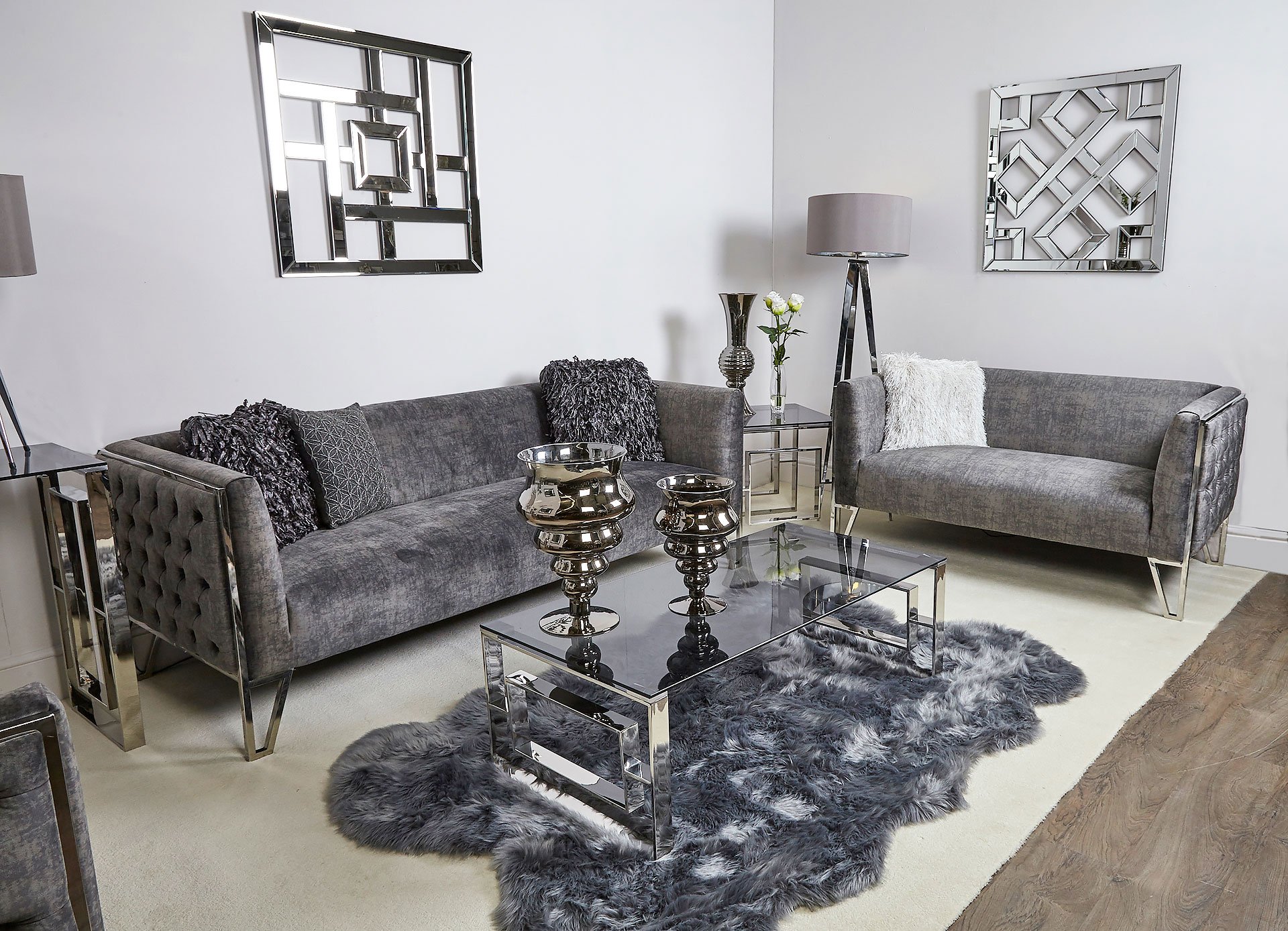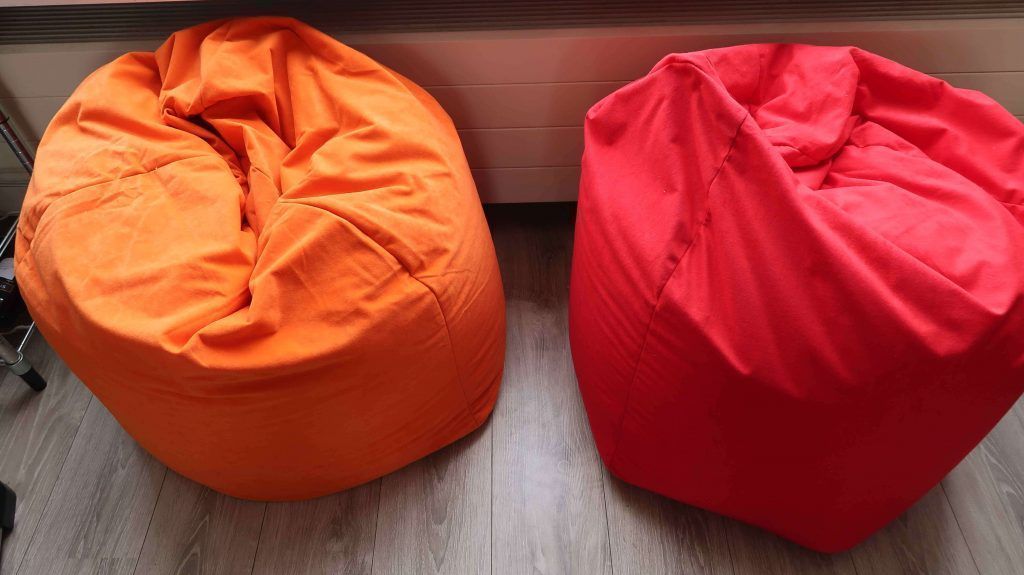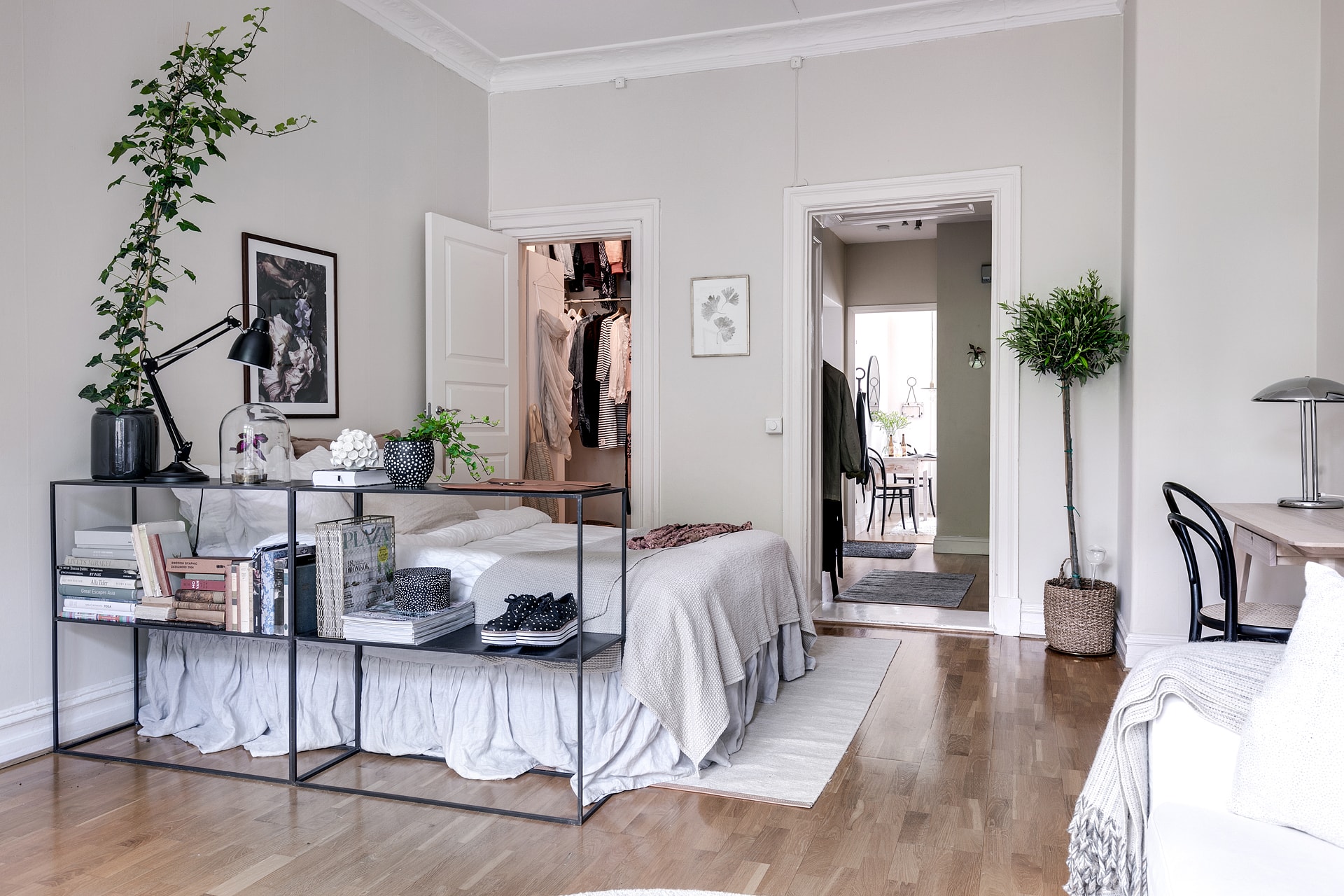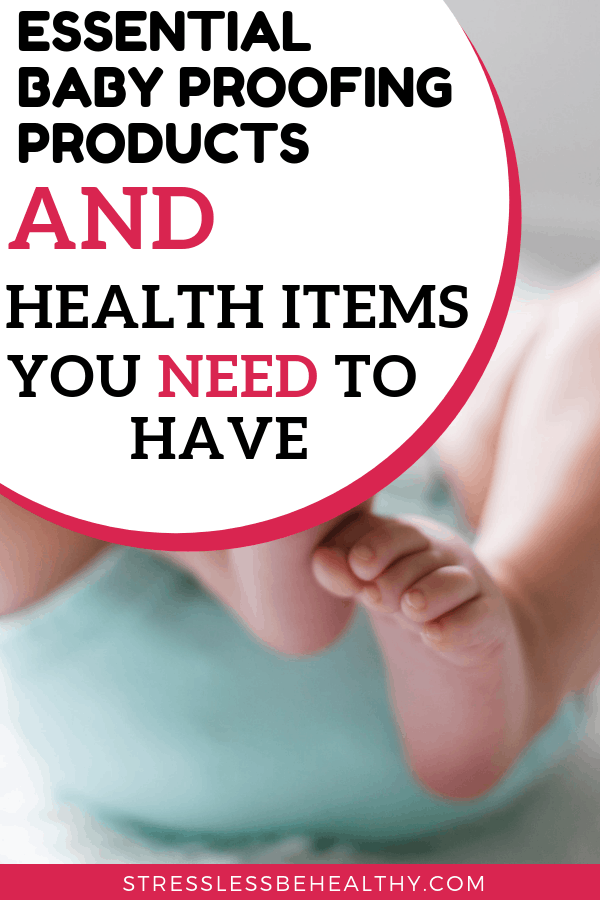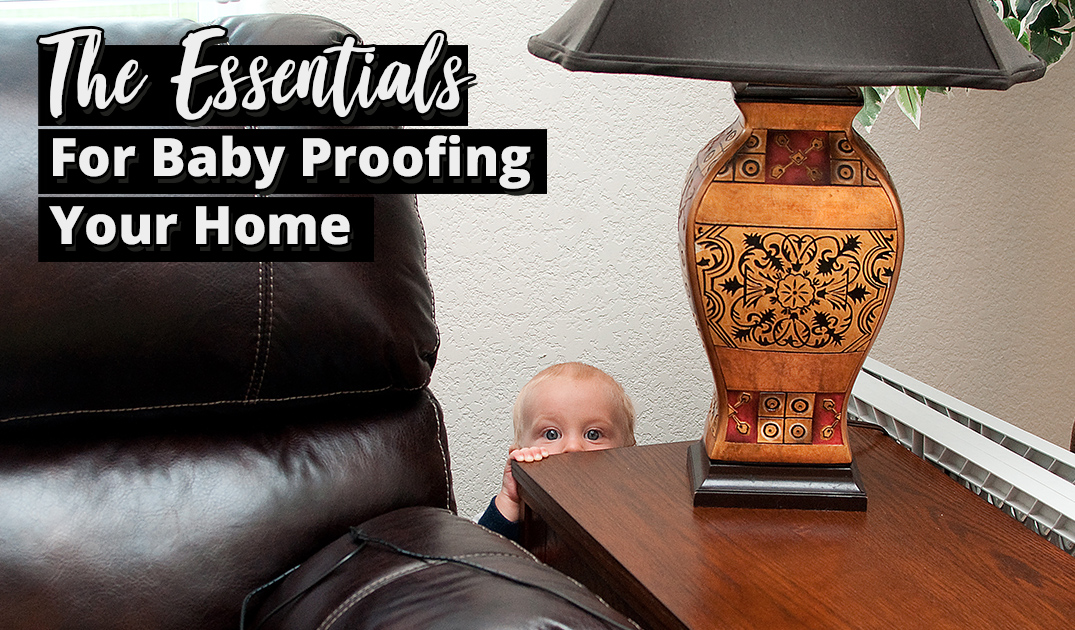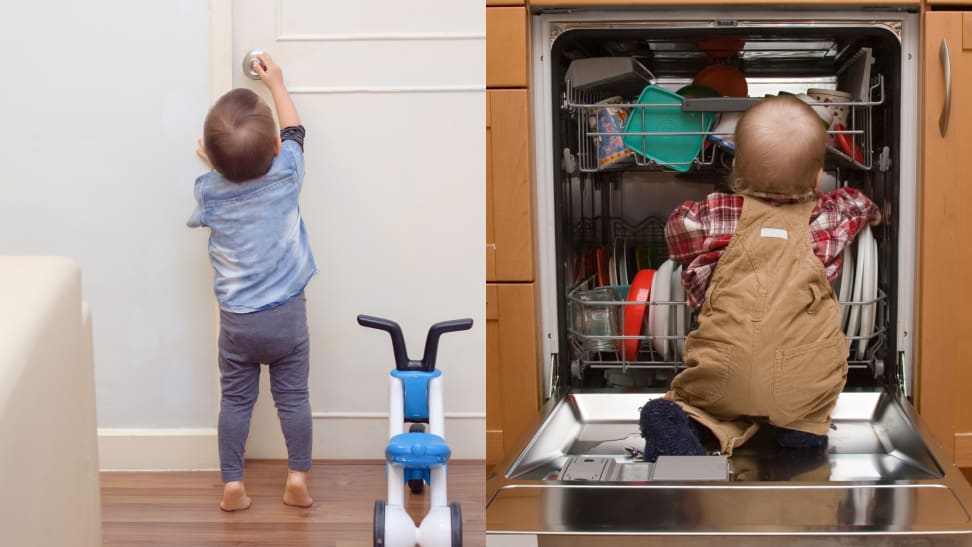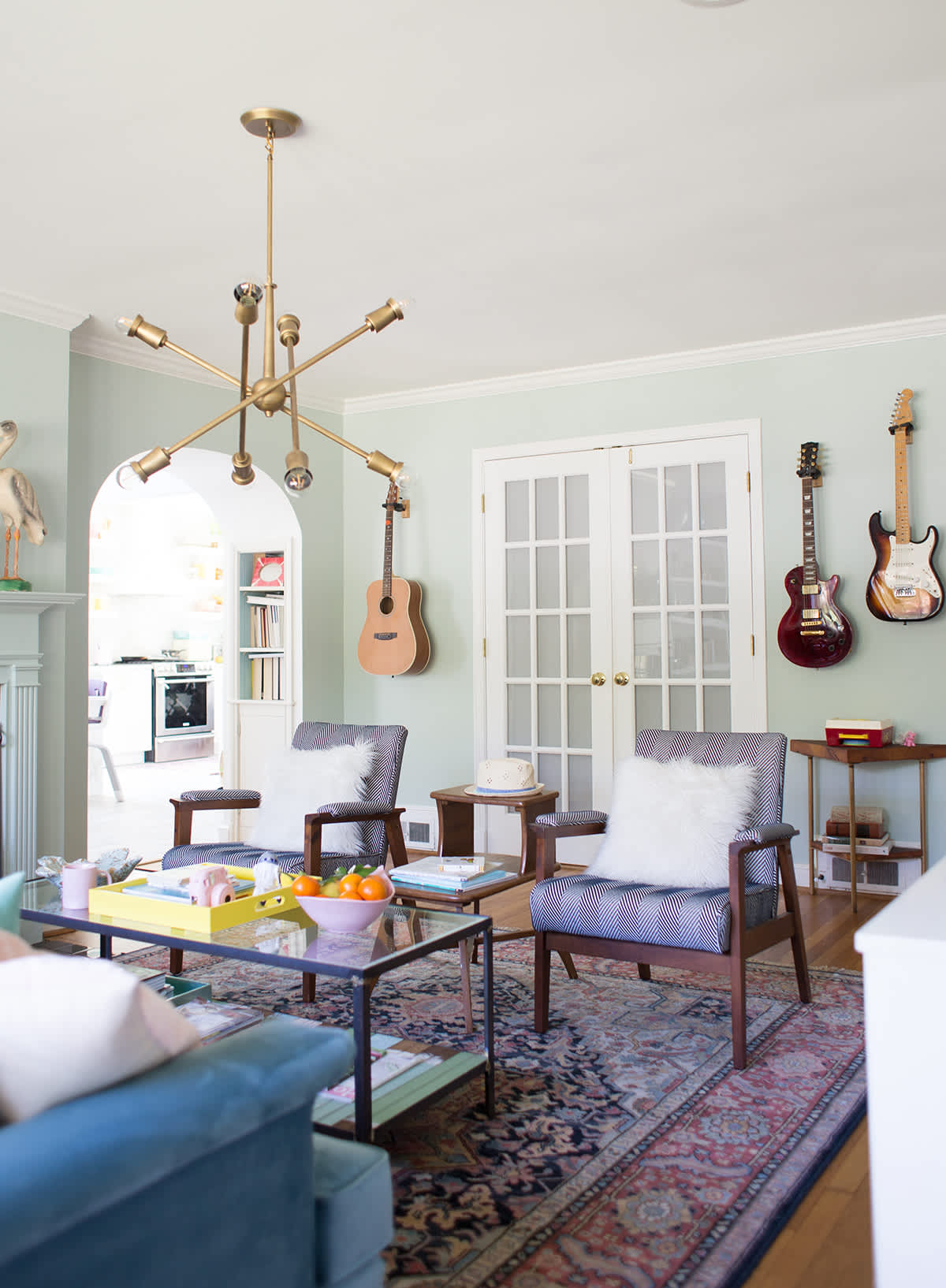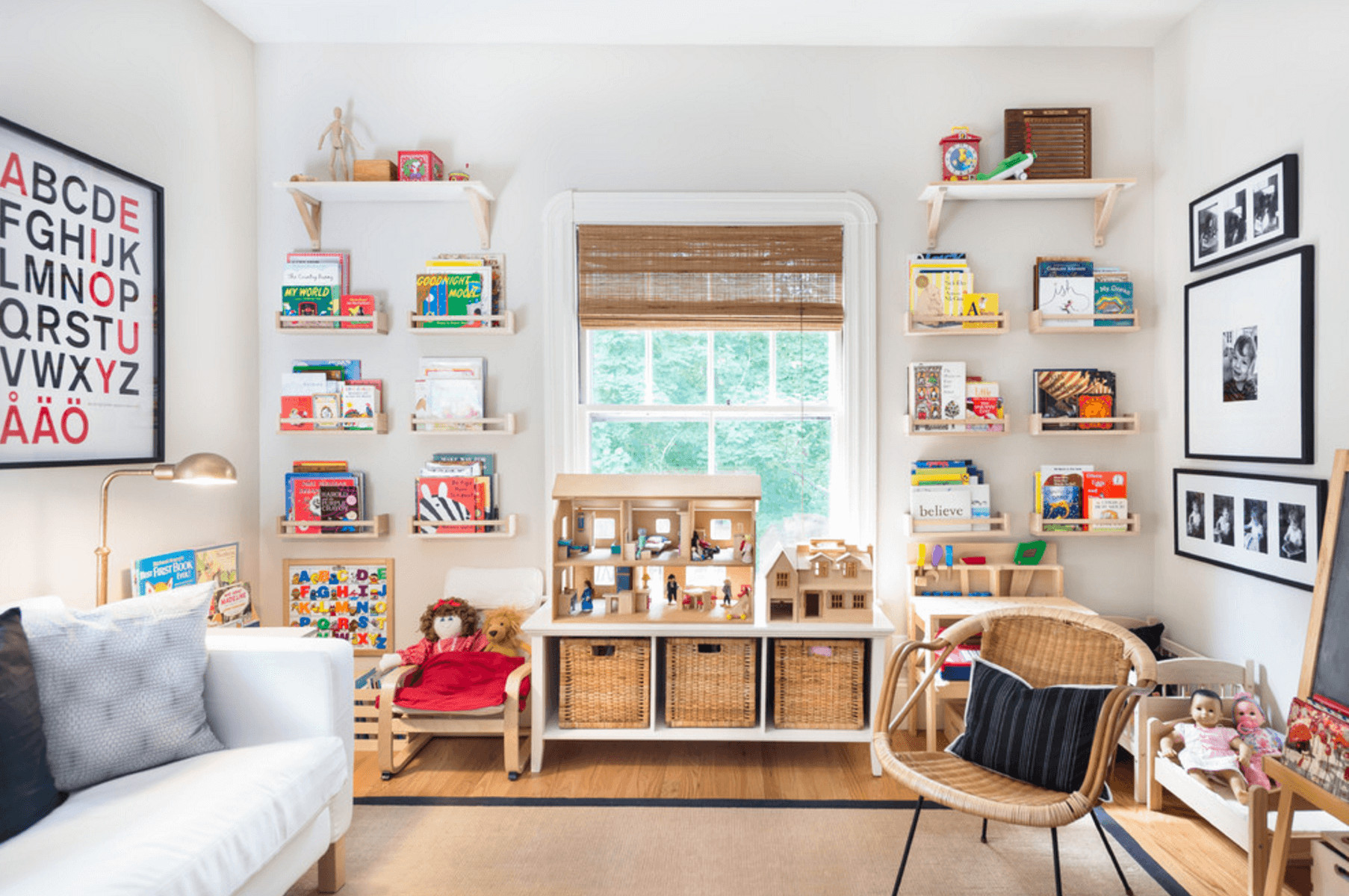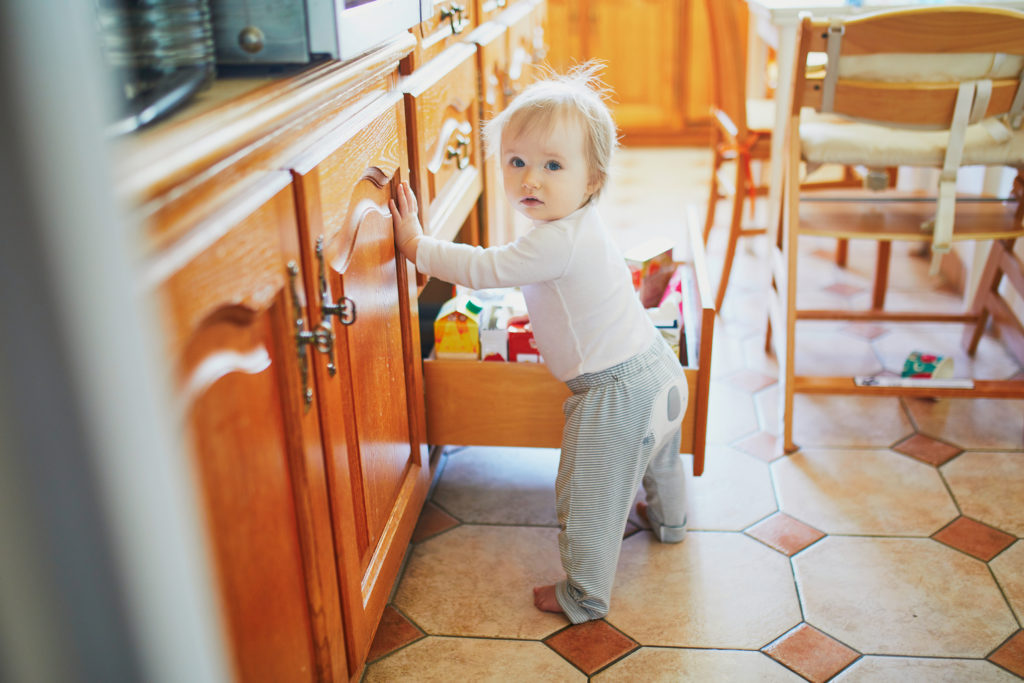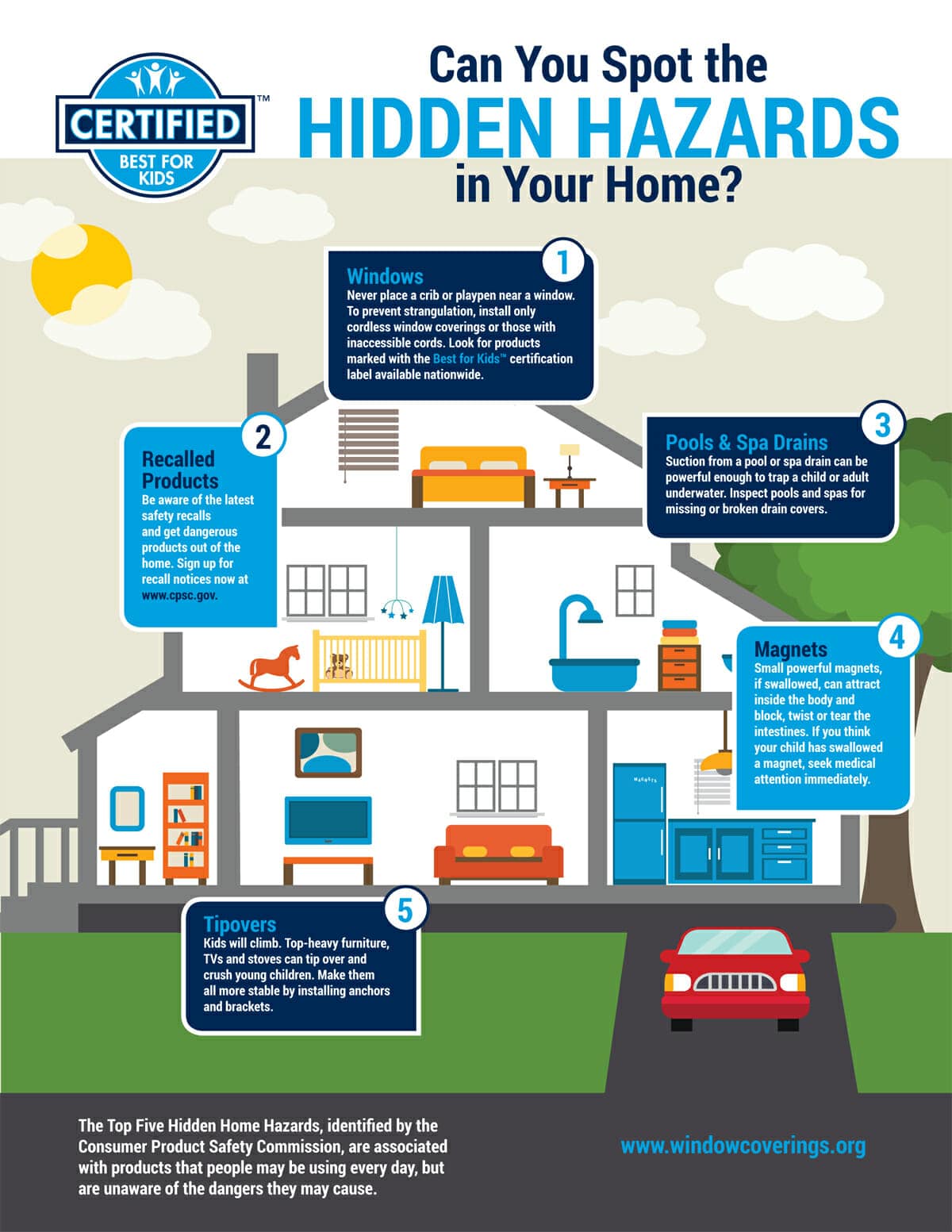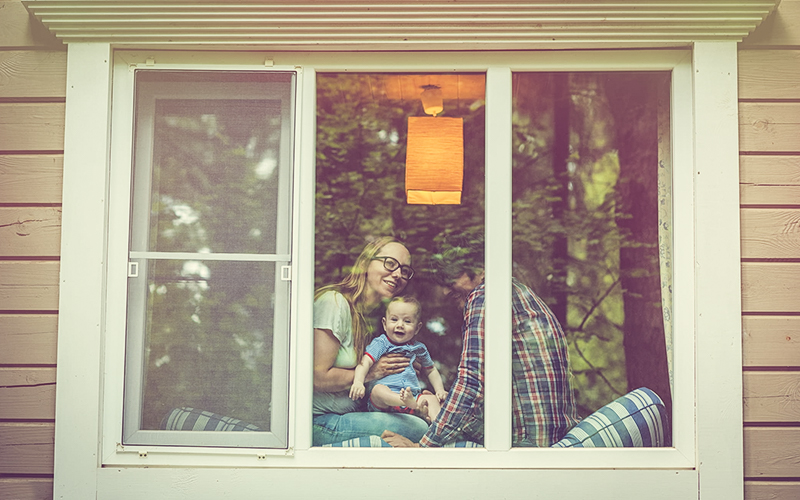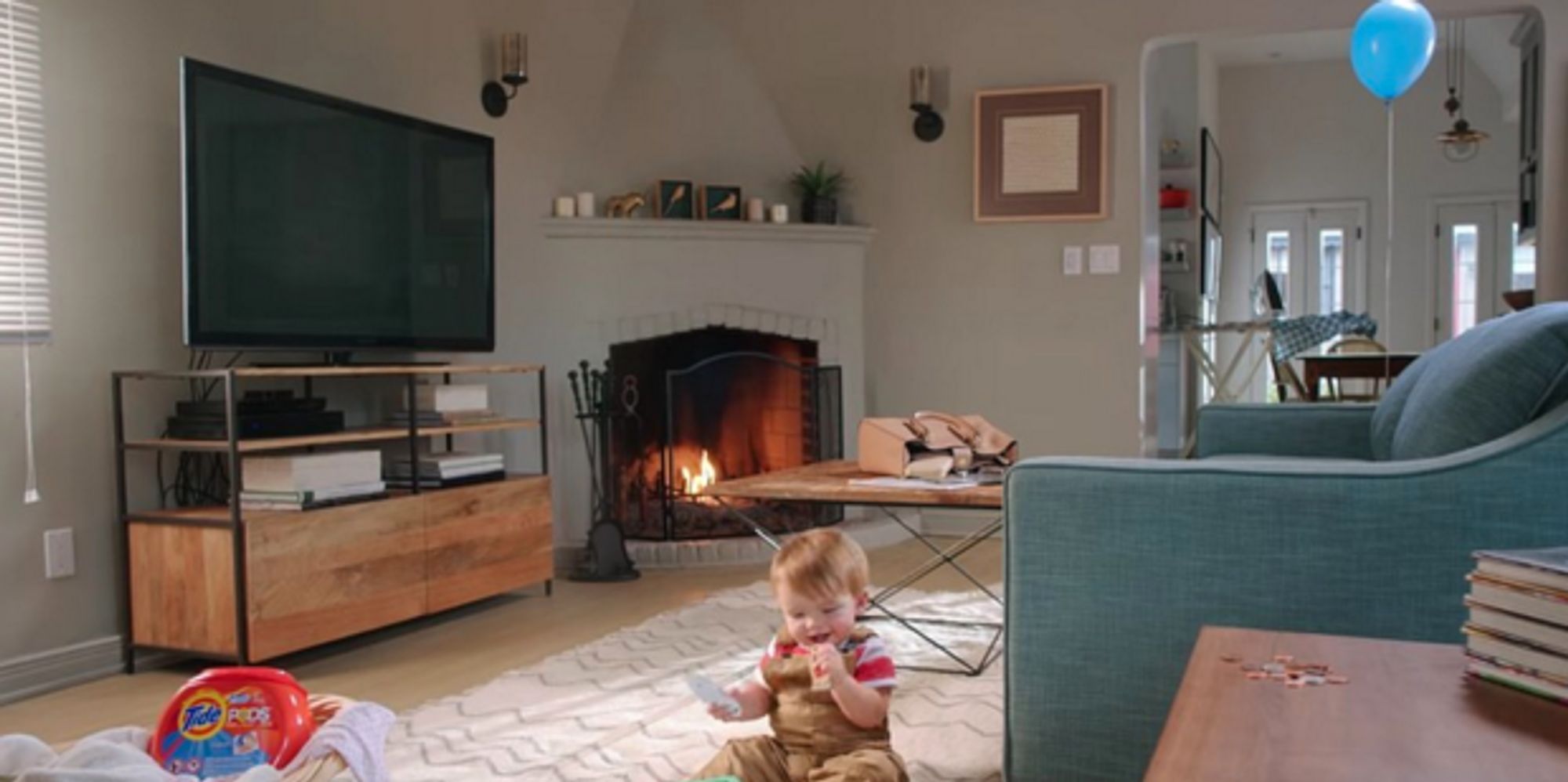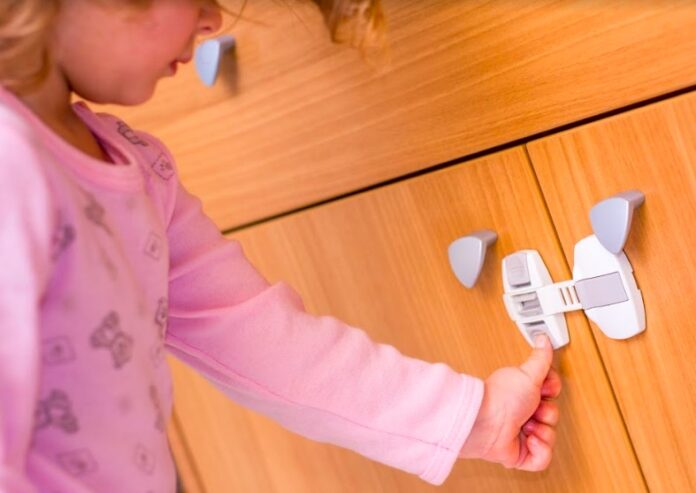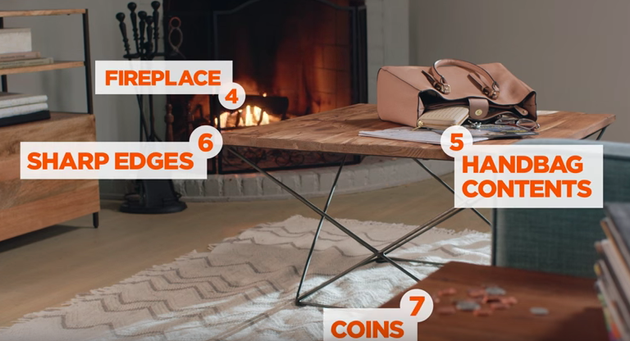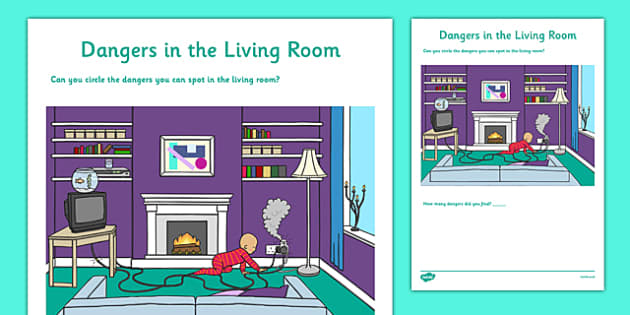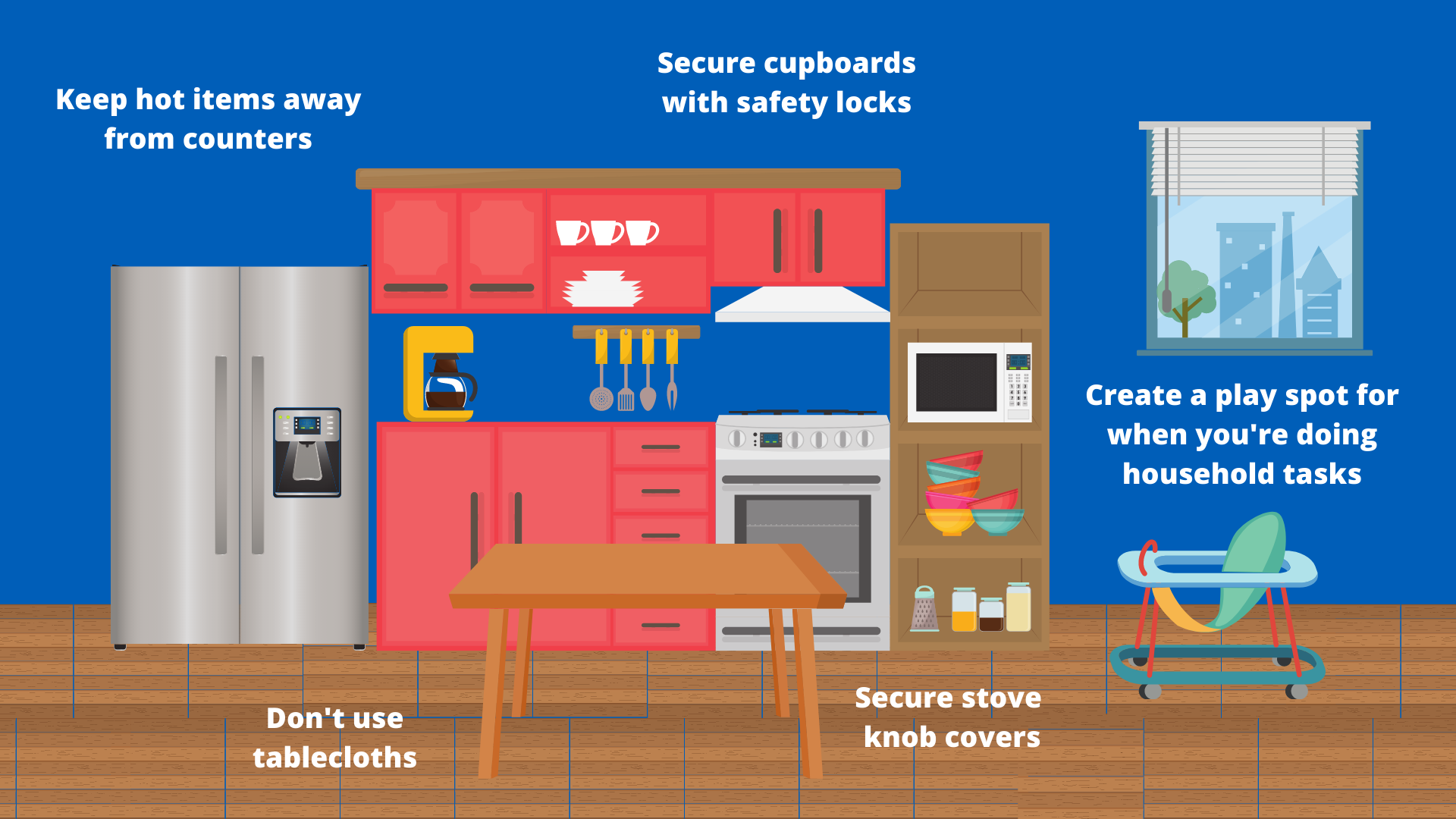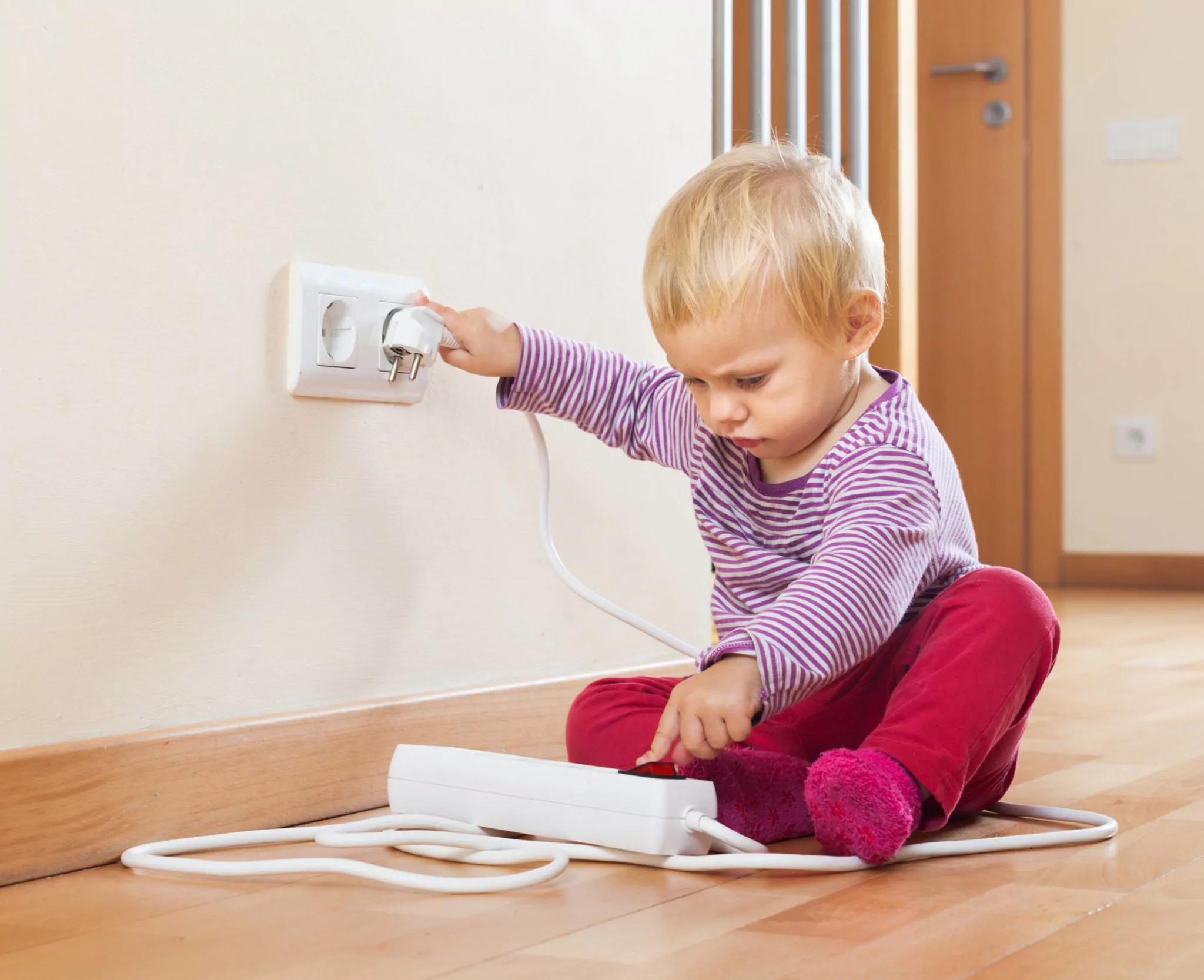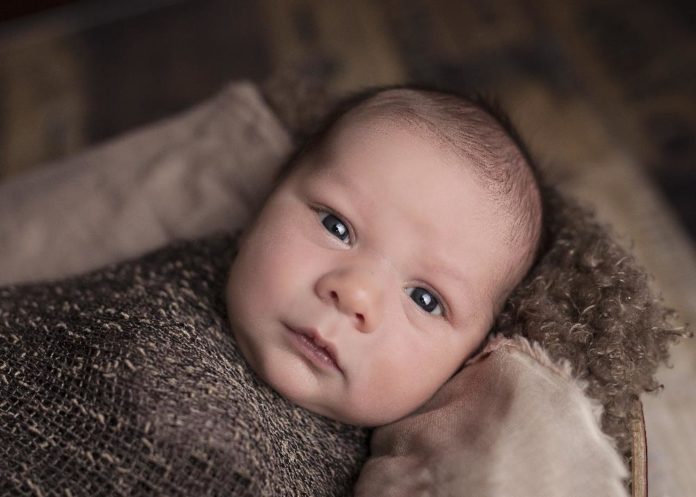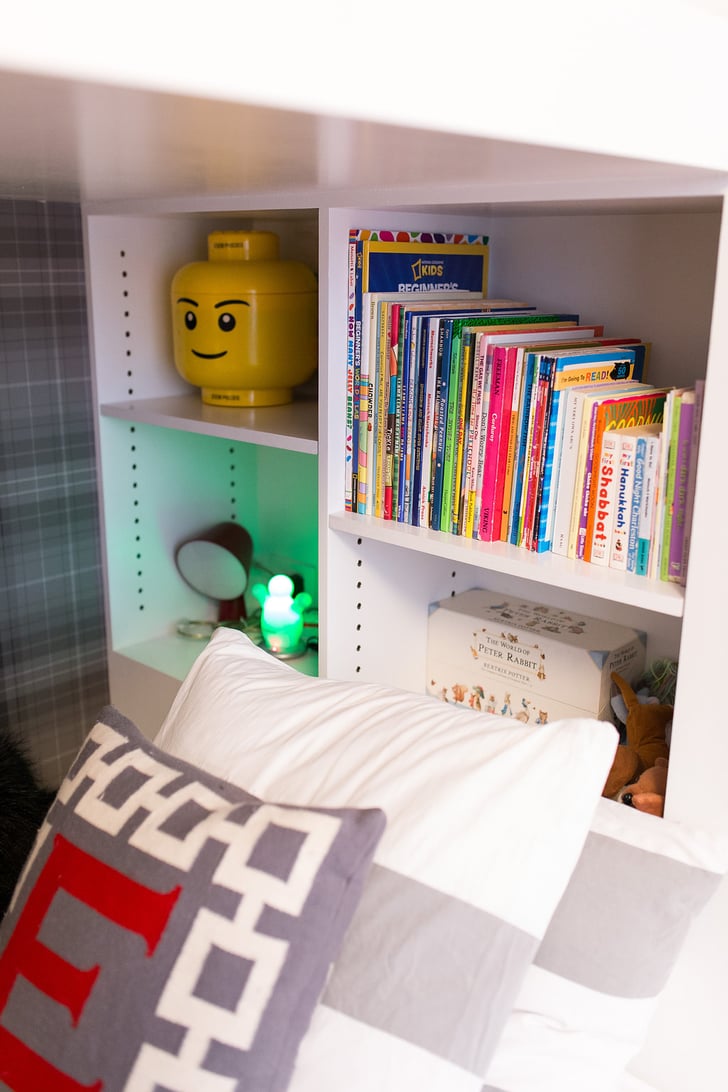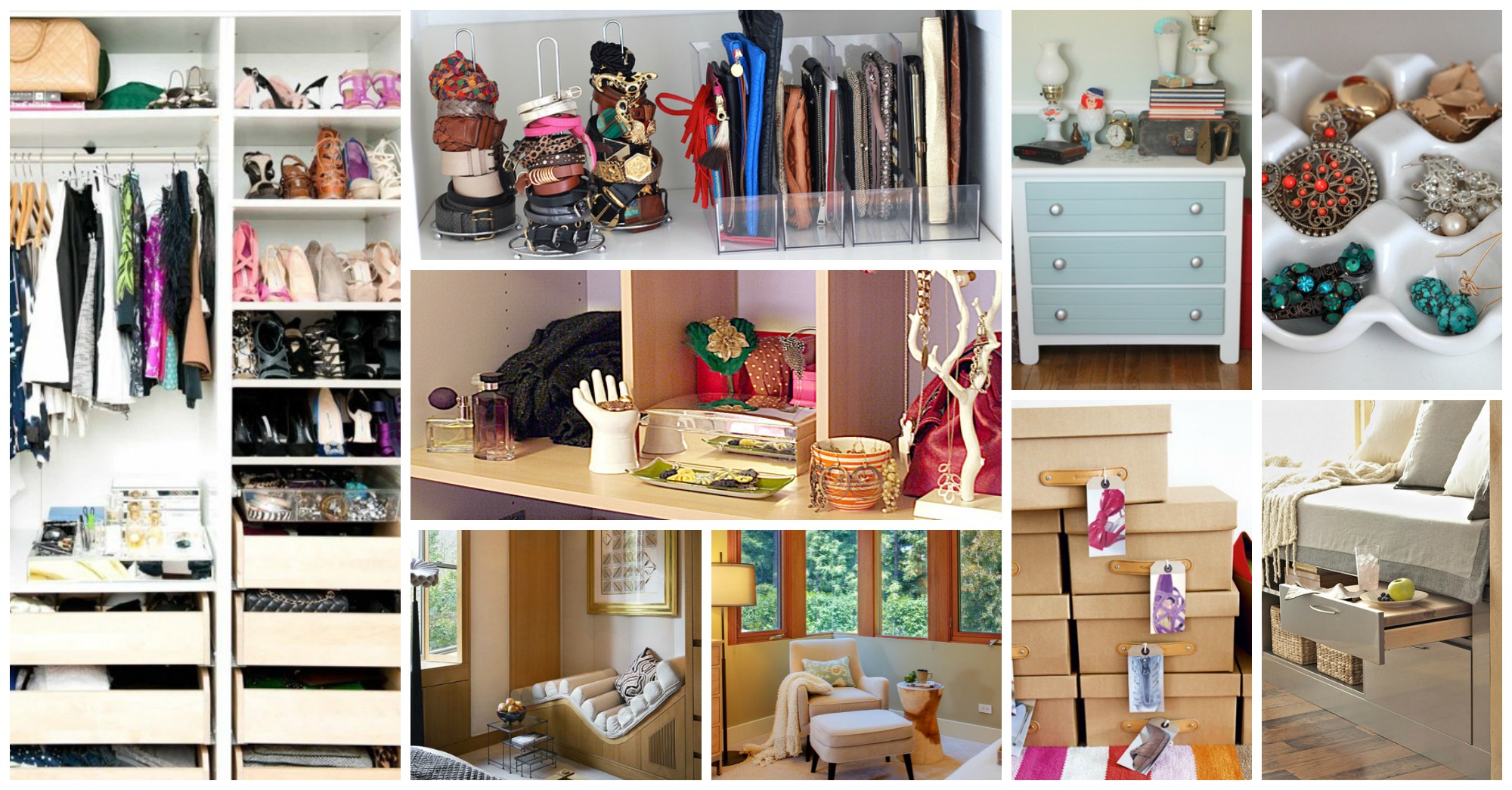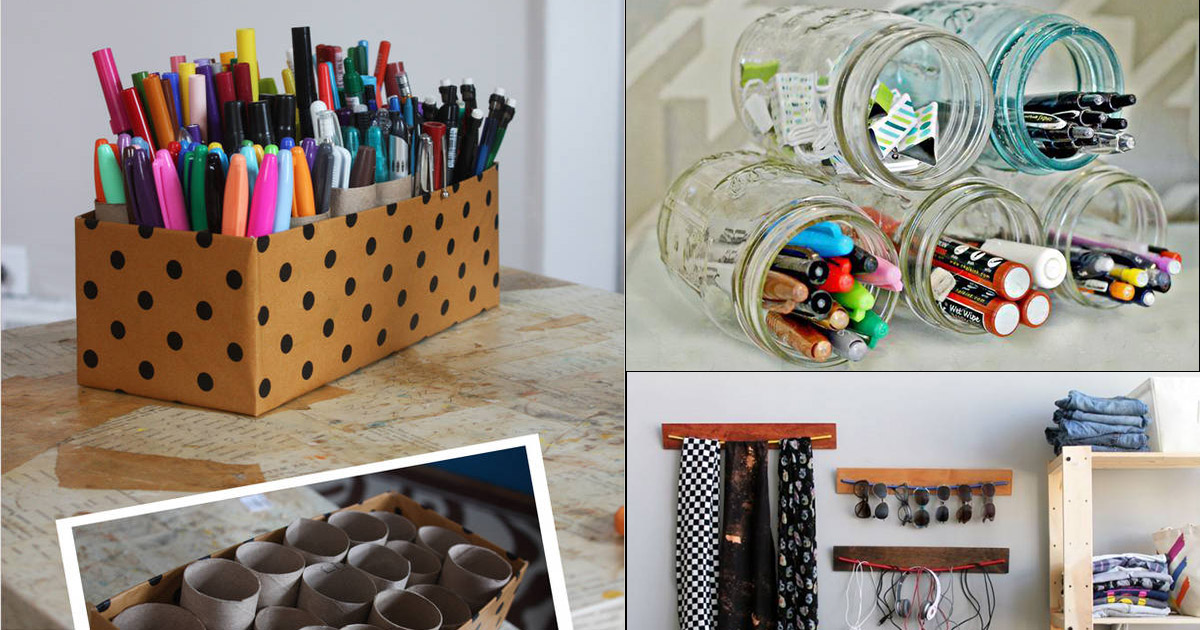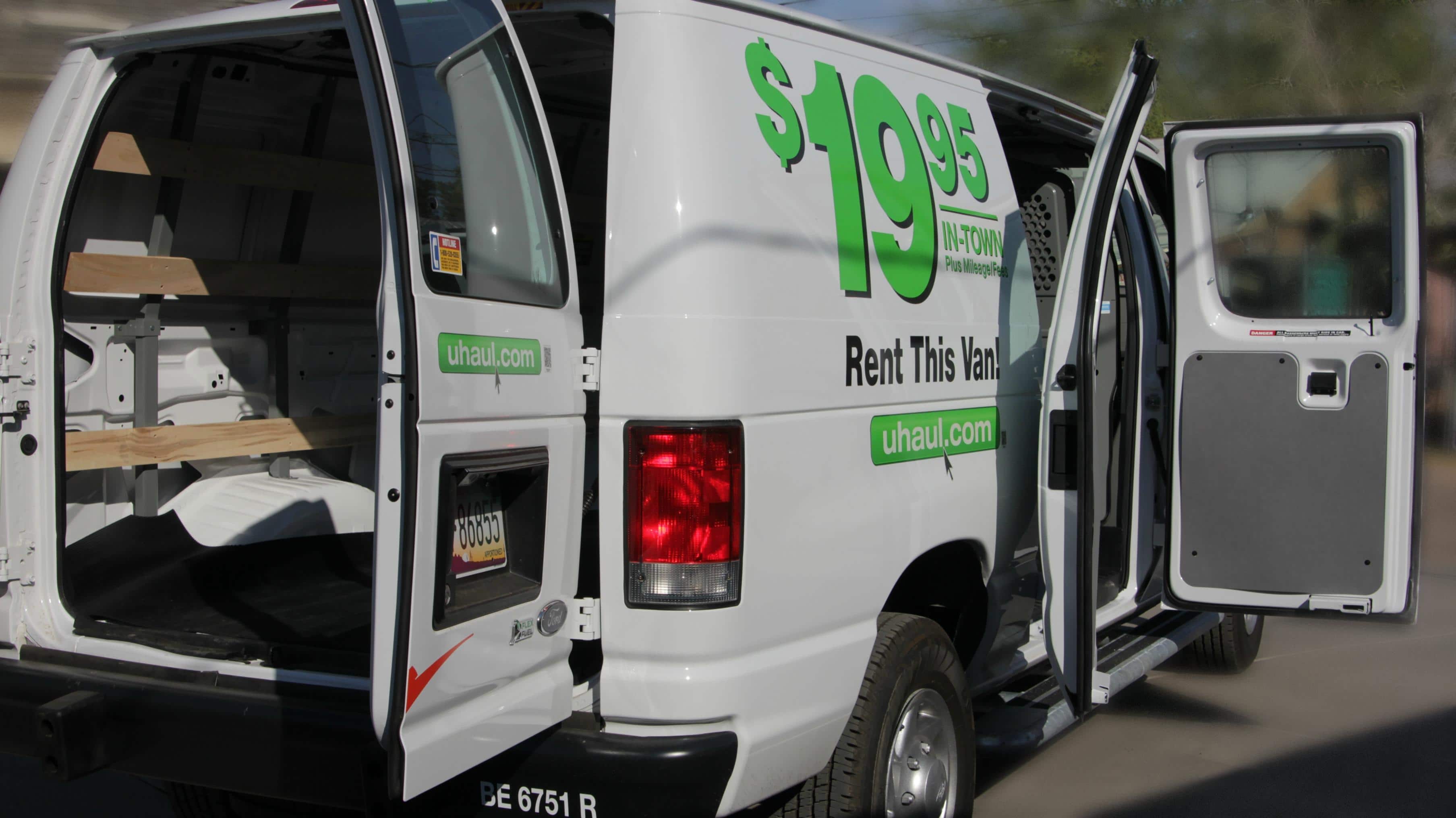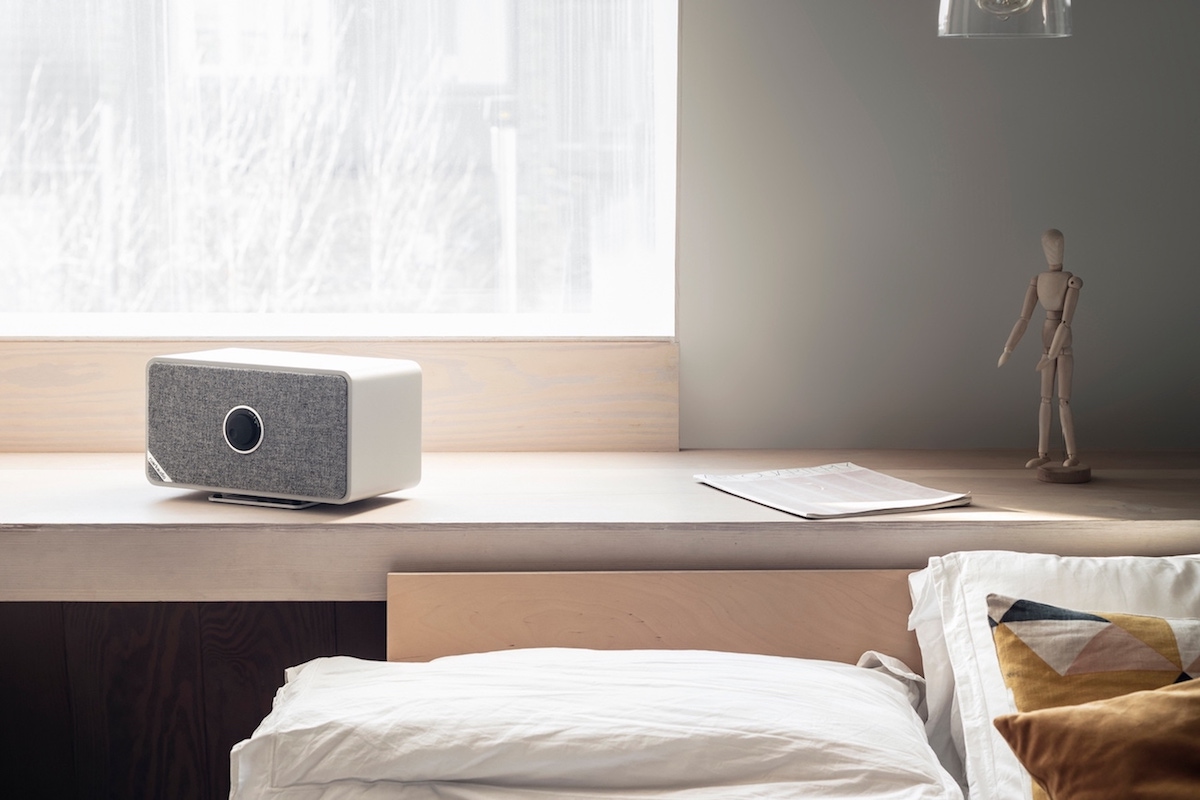As a new parent, one of your top priorities is keeping your baby safe. With their curious nature and newfound mobility, it's important to ensure that every room in your house is childproofed. The living room, in particular, can be a tricky space to baby proof, with its various furniture and potential hazards. But don't worry, we've got you covered with our comprehensive guide to childproofing your living room.Childproofing Your Living Room: A Comprehensive Guide
Before you start childproofing, it's important to get down on your baby's level and see the room from their perspective. This will help you identify potential hazards that may not be obvious to adults. Once you have a good understanding of the potential dangers, you can begin making your living room safe for your little one.How to Make Your Living Room Safe for Your Baby
1. Secure furniture to the wall. Tall and heavy furniture, such as bookcases and TV stands, can easily topple over and injure a curious baby. Use furniture straps to anchor them to the wall and prevent accidents. 2. Use outlet covers. Electrical outlets are a major hazard for babies, who love to explore by sticking their fingers or objects into them. Keep your outlets covered with safety plugs or outlet covers. 3. Eliminate cords. Cords from blinds, lamps, and other electronics can pose a strangulation risk for babies. Use cord shorteners or keep them out of reach to prevent accidents. 4. Install baby gates. If your living room has stairs, be sure to install baby gates at the top and bottom to prevent falls. 5. Secure cabinets and drawers. Use childproof locks on cabinets and drawers to keep your baby from getting into dangerous items, such as cleaning supplies or sharp objects. 6. Cover sharp corners. Coffee tables, end tables, and other furniture with sharp edges can be dangerous for a baby who is learning to walk. Use corner guards to soften any sharp edges. 7. Remove breakable items. Fragile decorations, vases, and other breakable items should be stored away or out of reach to prevent accidental injuries. 8. Choose non-toxic plants. If you have plants in your living room, make sure they are non-toxic in case your baby decides to taste them. 9. Keep cords and wires organized. With all the electronics in a typical living room, it's important to keep cords and wires organized and out of reach to prevent your baby from pulling on them. 10. Invest in a playpen or play yard. If you need to step away from the living room for a moment, a playpen or play yard can keep your baby contained and safe.10 Tips for Baby-Proofing Your Living Room
Just because you're baby-proofing your living room doesn't mean it has to look like a fortress. With a few design tips, you can create a safe and stylish space that your little one will love. 1. Choose soft, washable fabrics. Opt for furniture and decor made from soft and washable materials, such as cotton or microfiber, to make cleaning up after any spills or messes easier. 2. Use rugs for cushioning. A soft rug can provide some cushioning for your baby as they learn to crawl and walk, while also adding some warmth and texture to the room. 3. Incorporate child-friendly storage. Use baskets, bins, and toy chests to store your baby's toys and keep them organized. This will also make it easier for your little one to access and put away their own toys as they grow. 4. Choose non-toxic paint. If you're planning on painting your living room, make sure to use non-toxic paint to keep your baby safe from any harmful chemicals.Creating a Safe and Stylish Living Room for Your Little One
1. Furniture straps 2. Outlet covers 3. Cord shorteners 4. Baby gates 5. Childproof locks 6. Corner guards 7. Non-toxic plants 8. Playpen or play yardEssential Baby-Proofing Products for Your Living Room
If you're looking for some inspiration on how to design a baby-friendly living room, here are a few ideas to get you started: 1. Create a designated play area. You can use a corner or nook in your living room to set up a play area for your baby. Use a soft rug, some cushions, and a few toys to make it cozy and inviting. 2. Add some soft seating. Bean bag chairs, floor cushions, or a comfy recliner can provide comfortable seating for you and your baby to relax and play in the living room. 3. Incorporate educational elements. Hang a world map or alphabet posters on the wall to make learning fun for your little one.Designing a Baby-Friendly Living Room: Ideas and Inspiration
1. Use a hair tie to secure cabinet doors. Simply loop a hair tie around the handles of cabinet doors to keep them closed and prevent your baby from opening them. 2. Use pool noodles to cover sharp edges. Cut a pool noodle to the desired length and use it to cover sharp edges of furniture. 3. Place a rubber band around doorknobs. This will make it harder for your baby to turn the doorknob and open doors that you don't want them to.Childproofing Hacks for Your Living Room
1. Electrical outlets. Use outlet covers or safety plugs to prevent your baby from sticking their fingers or objects into outlets. 2. Falling furniture. Secure tall and heavy furniture to the wall with furniture straps. 3. Cords and wires. Keep cords and wires organized and out of reach to prevent your baby from pulling on them. 4. Sharp edges. Use corner guards to cover sharp edges of furniture. 5. Small objects. Keep small objects out of reach to prevent your baby from choking on them.5 Common Living Room Hazards for Babies and How to Avoid Them
Baby-proofing your living room doesn't have to break the bank. Here are a few budget-friendly tips: 1. DIY corner guards. Instead of buying corner guards, you can cut and shape pool noodles to fit the corners of your furniture. 2. Use hair ties to secure cabinets. As mentioned before, this is a simple and inexpensive way to keep cabinets closed. 3. Shop at thrift stores. You can find affordable baskets, bins, and storage solutions at thrift stores to keep your living room organized.Baby-Proofing on a Budget: Living Room Edition
1. Have a designated place for everything. This will make it easier to keep your living room organized and prevent your baby from getting into things they shouldn't. 2. Clean up regularly. Make it a habit to tidy up your living room at the end of each day to keep it safe and clutter-free. 3. Involve your baby in the process. As your child grows, involve them in the process of cleaning up and keeping the living room organized. This will teach them responsibility and help them learn to take care of their own space.How to Keep Your Living Room Organized and Safe for Your Baby
Baby Proofing Your Living Room: Creating a Safe and Stylish Space

Why Baby Proofing Your Living Room is Essential
Identifying Potential Hazards
 Before you start baby proofing your living room, it's essential to assess the space for any potential hazards. This will help you determine what areas need the most attention. Some common hazards to look out for include sharp edges on furniture, electrical outlets, cords and wires, and small objects that can be choking hazards.
Make a list of all the potential hazards in your living room, and prioritize which ones need to be addressed first.
Before you start baby proofing your living room, it's essential to assess the space for any potential hazards. This will help you determine what areas need the most attention. Some common hazards to look out for include sharp edges on furniture, electrical outlets, cords and wires, and small objects that can be choking hazards.
Make a list of all the potential hazards in your living room, and prioritize which ones need to be addressed first.
Creating a Safe Space
 Once you have identified the potential hazards in your living room, it's time to start making changes to create a safe and child-friendly space.
Invest in furniture corner guards to cover sharp edges and corners, and use outlet covers to keep little fingers from getting into electrical outlets.
Keep cords and wires out of reach by using cord covers or tucking them away behind furniture. Consider using furniture straps to secure large pieces of furniture, such as bookcases or TV stands, to the wall to prevent them from tipping over.
It's also important to remove any small objects that could be choking hazards, such as small toys or decorative items.
Once you have identified the potential hazards in your living room, it's time to start making changes to create a safe and child-friendly space.
Invest in furniture corner guards to cover sharp edges and corners, and use outlet covers to keep little fingers from getting into electrical outlets.
Keep cords and wires out of reach by using cord covers or tucking them away behind furniture. Consider using furniture straps to secure large pieces of furniture, such as bookcases or TV stands, to the wall to prevent them from tipping over.
It's also important to remove any small objects that could be choking hazards, such as small toys or decorative items.
Making It Stylish
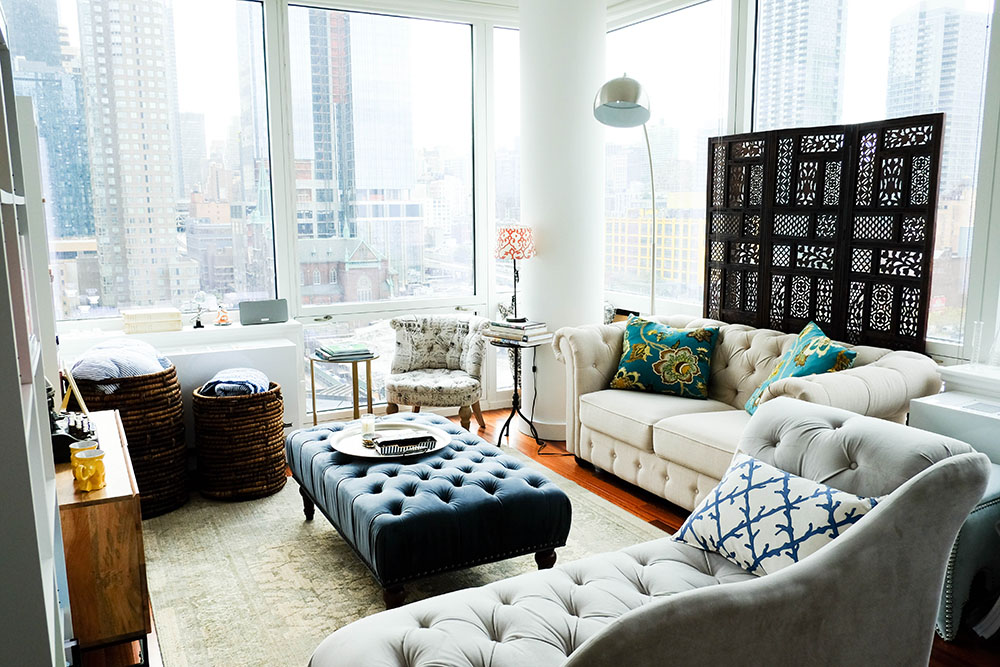 Baby proofing your living room doesn't mean sacrificing style. With so many stylish and functional baby-proofing products available, you can create a safe and stylish space for your little one.
Choose furniture with rounded edges and soft fabrics, which are both safe and stylish.
You can also opt for decorative storage solutions, such as baskets or bins, to keep toys and other items out of reach.
Invest in a playpen or baby gate to create a designated play area for your little one, while also keeping them safe.
Baby proofing your living room doesn't mean sacrificing style. With so many stylish and functional baby-proofing products available, you can create a safe and stylish space for your little one.
Choose furniture with rounded edges and soft fabrics, which are both safe and stylish.
You can also opt for decorative storage solutions, such as baskets or bins, to keep toys and other items out of reach.
Invest in a playpen or baby gate to create a designated play area for your little one, while also keeping them safe.
Final Thoughts
 Incorporating these baby-proofing tips into your living room design will not only provide a safe environment for your little one but also allow you to continue enjoying your space.
Remember to regularly reassess and update your living room as your baby grows and becomes more mobile.
With a little creativity and organization, you can create a safe and stylish living room that both you and your little one will love.
Incorporating these baby-proofing tips into your living room design will not only provide a safe environment for your little one but also allow you to continue enjoying your space.
Remember to regularly reassess and update your living room as your baby grows and becomes more mobile.
With a little creativity and organization, you can create a safe and stylish living room that both you and your little one will love.







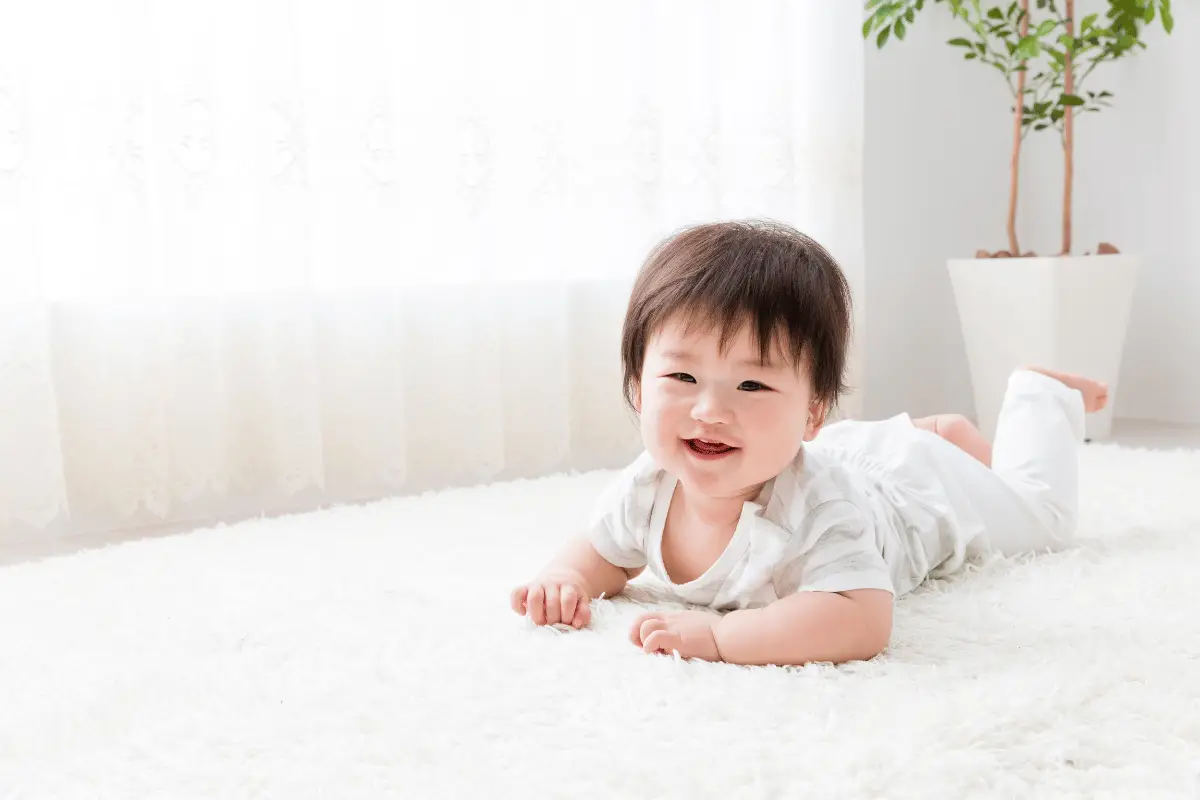
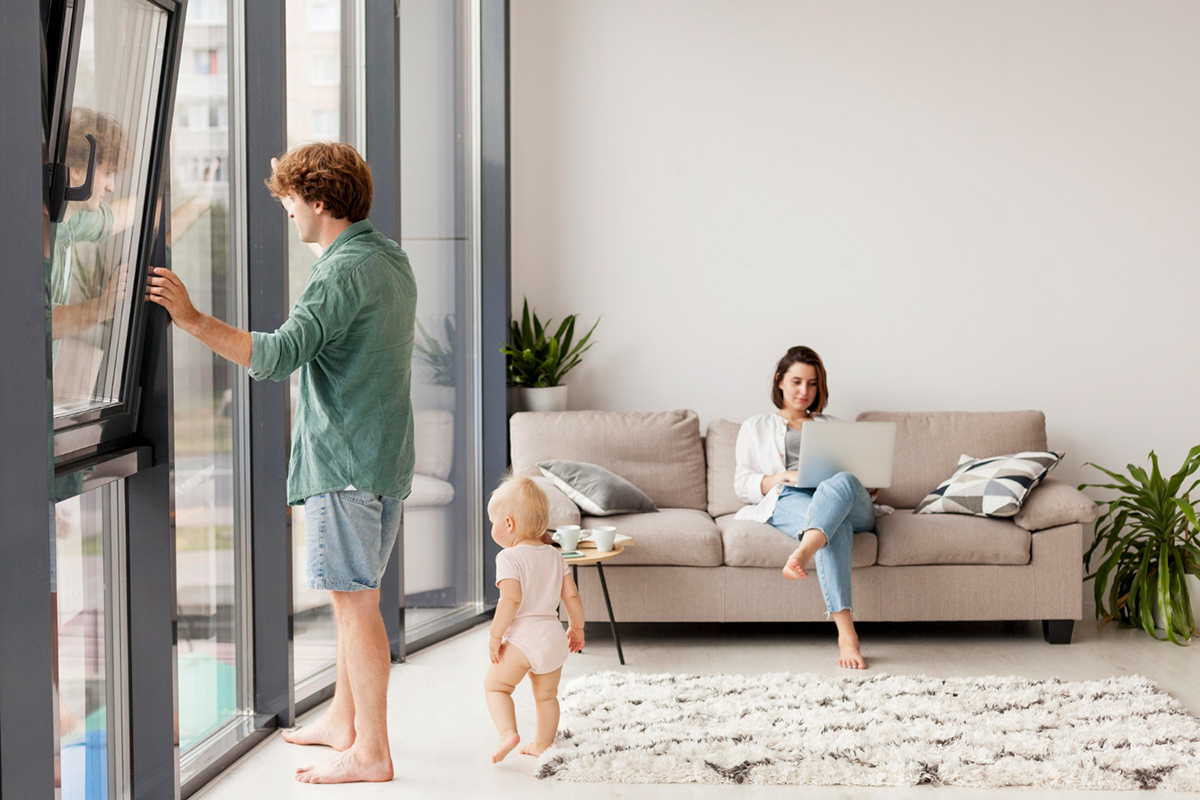



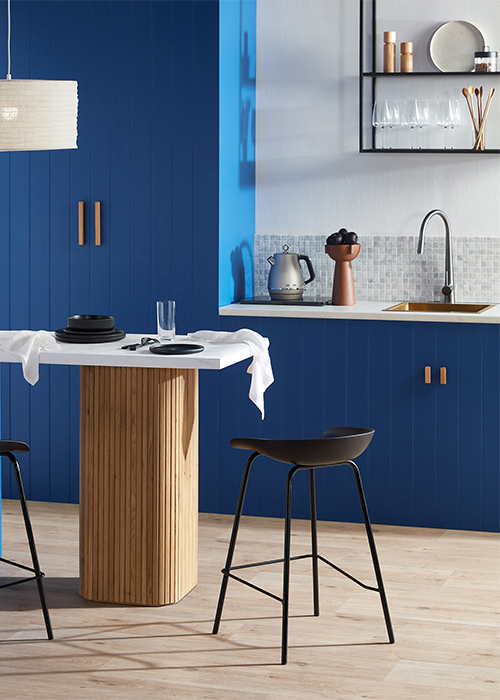





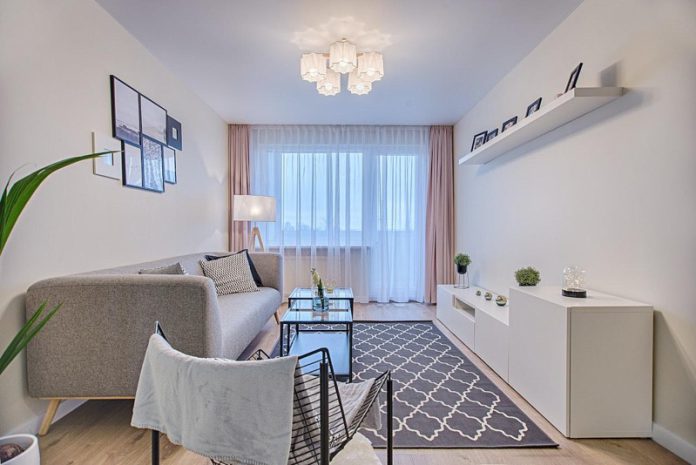
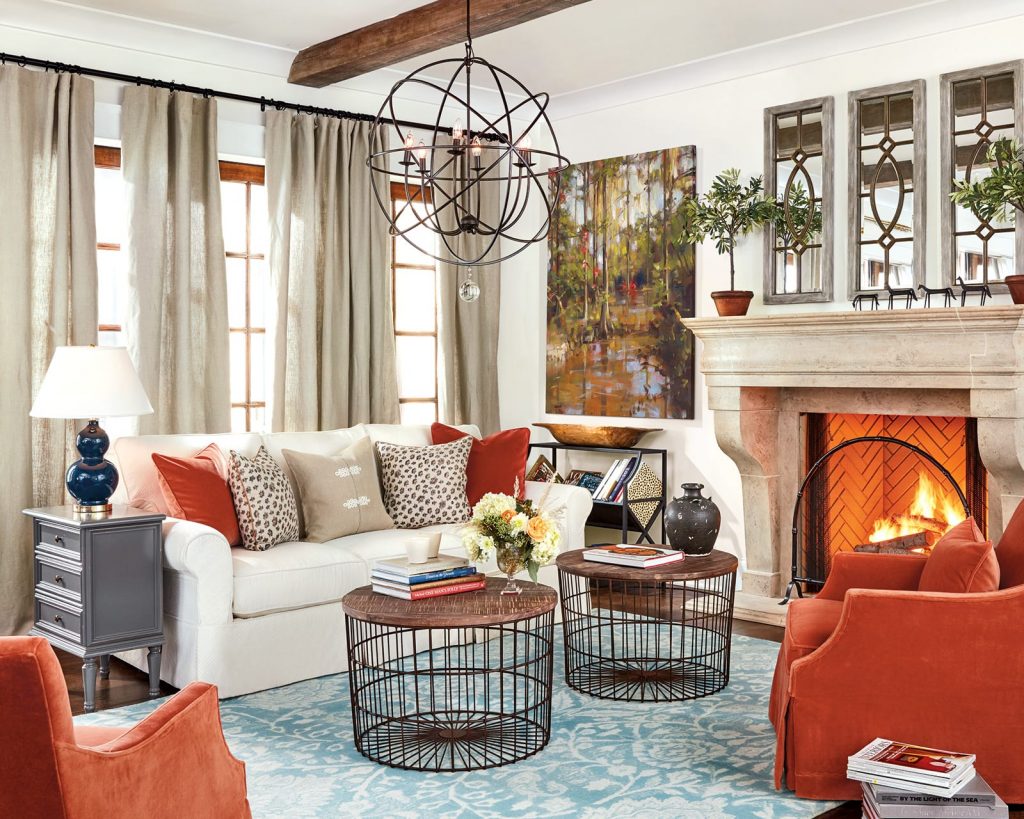
:max_bytes(150000):strip_icc()/00BannerCDM-Jenn_Pablo-IMG_5857-2-7e863c0997f74af49e4981af19fb5898.jpg)





